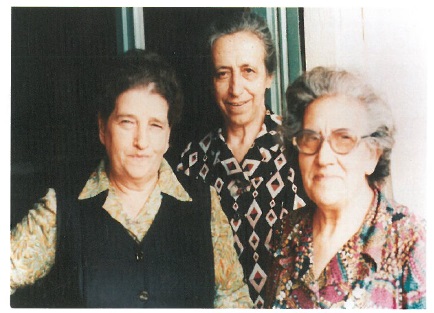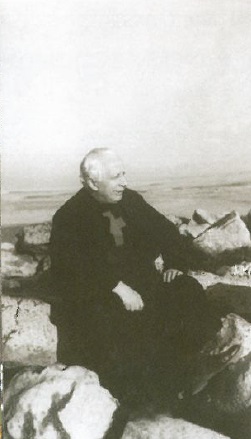 ‘In January 1936 I was in Rome from 14 November onwards as a postulant of the Daughters of St. Camillus. I loved that form of life, even though it was hard for me. Indeed, I was alone for the whole of the day in a room of the community unravelling threads with which I had to prepare so many balls of wool.
‘In January 1936 I was in Rome from 14 November onwards as a postulant of the Daughters of St. Camillus. I loved that form of life, even though it was hard for me. Indeed, I was alone for the whole of the day in a room of the community unravelling threads with which I had to prepare so many balls of wool.
This was undoubtedly work that was not hard but it was suffocating for me at the age of twenty-one. However I did not think of leaving the Congregation: it had cost me a great deal to be accepted into it and I received magnificent examples from it.
But on 6 January 1936, while the Mother General was blessing the table, a sudden idea changed the direction of my life. This was an idea that was still not clear but it was sufficiently precise: to go back to the world, to return to my university studies which I had interrupted, and to create a movement of consecrated lay women who in the world would care for the sick in the spirit of St. Camillus, penetrate every milieu, even the most abject, and prepare the way for priests, for Christ. Yes: but how could this be done? Was this a valid reason for abandoning my religious vocation? Who would believe in this idea which could have been the whim of an exuberant and enthusiastic young woman? The light became a little clearer three days later at a meeting with the Father General of the Camillian Order, Father Florindo Rubini: ‘to return to the world where I would be able to find a vast apostolic field, for example the sensitisation of women nurses’. Whatever the case, my pathway was not that of religious life.
I listened but I did not perceive a real connection between the words of the Father General and the sudden idea of 6 January. And it remained my secret…
On 19 January 1936, before leaving the community, I telephoned Father Carrazzo whom I had met by chance during a Holy Mass at the Sanctuary of St. Camillus. He was neither amazed nor displeased. He just said to me: ‘remember that the habit does not make the monk’. What was he alluding to? I did not ask him but at that moment of despair and uncertainty in front of my unknown vocation the words of that father were of comfort to me’.
Germana went back to her family, accompanied once again by her parents. ‘The return to Milan’, Germana went on, ‘was the beginning of an adventure of blind faith and hope: it was a matter of groping one’s way forward, living day by day in faithfulness to an idea that was still obscure: at least if I had known that there existed within the Church other lay movements that wanted a consecration for the apostolate!’
After going back to her studies she was determined to explore at a university level matters connected with St. Camillus, his spirituality and his  Order. But the secret remained a secret and there was no lack of hours of dismay.
Order. But the secret remained a secret and there was no lack of hours of dismay.
‘Only on 11 February, a few days after my return to my family, was there a spiral of light. I referred to the idea with a chance confessor, a Franciscan.
The answer was an invitation to continue with faithfulness on that pathway; one only had to have courage, ‘because’, he said, ‘he who carries a flag must be ready for the cross’.
I lacked the courage to speak further on the matter with anyone, to express the idea to anyone. To ask whether the deep pull to live, in the world, a form of new, total and full consecration, for always, amidst other people, in the exercise of a profession, with special care for the dying, the sick, the suffering, their world…came from God – or was it madness?’
After returning to Milan Germana also got into contact again with the Camillians and this made her life very hard because she was ordered not to have these contacts nor – in order to safeguard her health – to be with sick people, something which she, instead, immediately did, visiting them because of her wish to engage in Camillian service. Her inner strength enabled her to continue on the pathway she had begun. And she dedicated herself with fervour to her studies.
From her activity of these years which were concealed but fertile would be born the Secular Institute that took the name of Women Missionaries of the Sick.














Camillians on Facebook
Camillians on Twitter
Camillians on Instagram